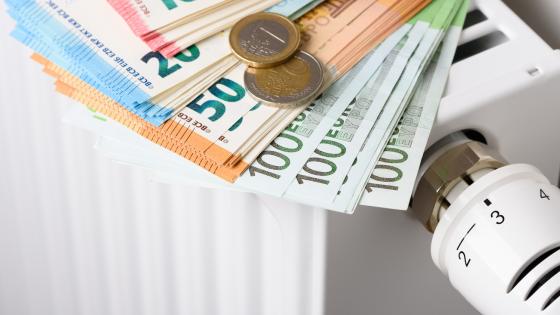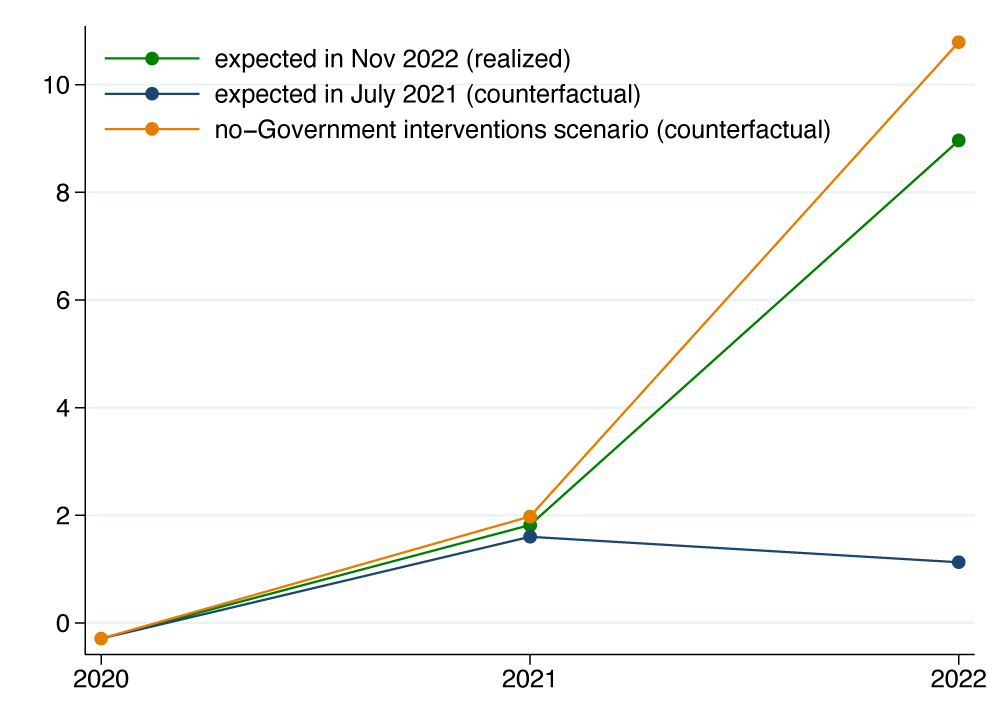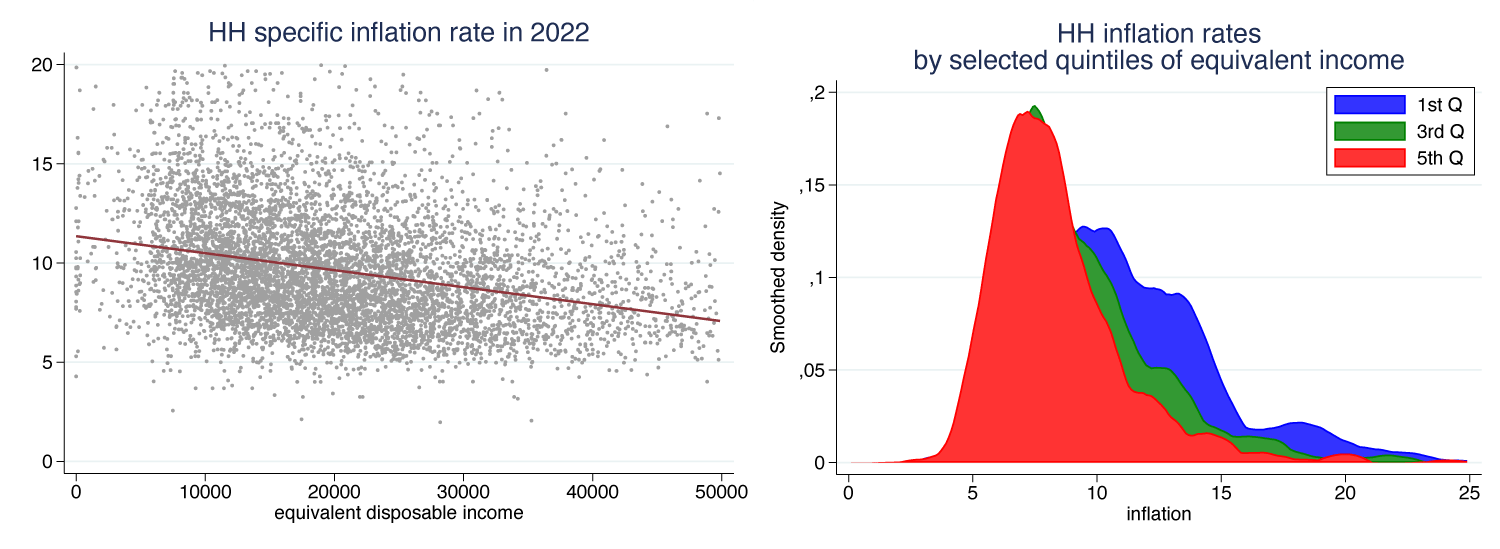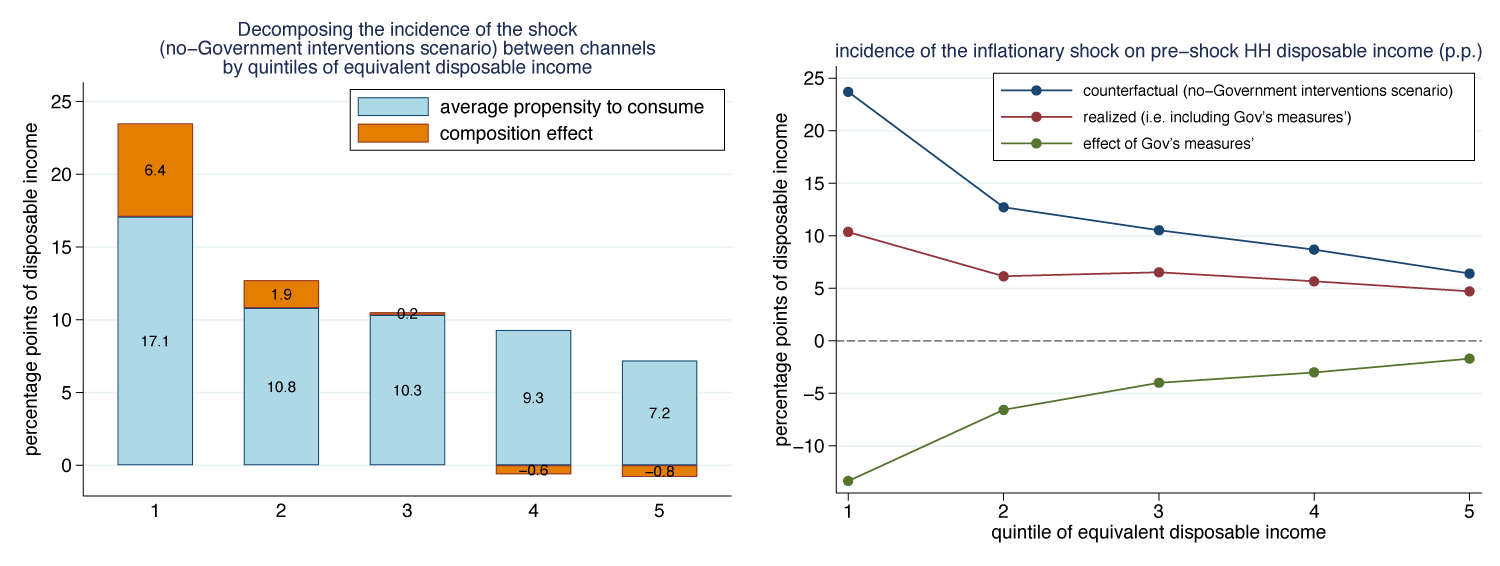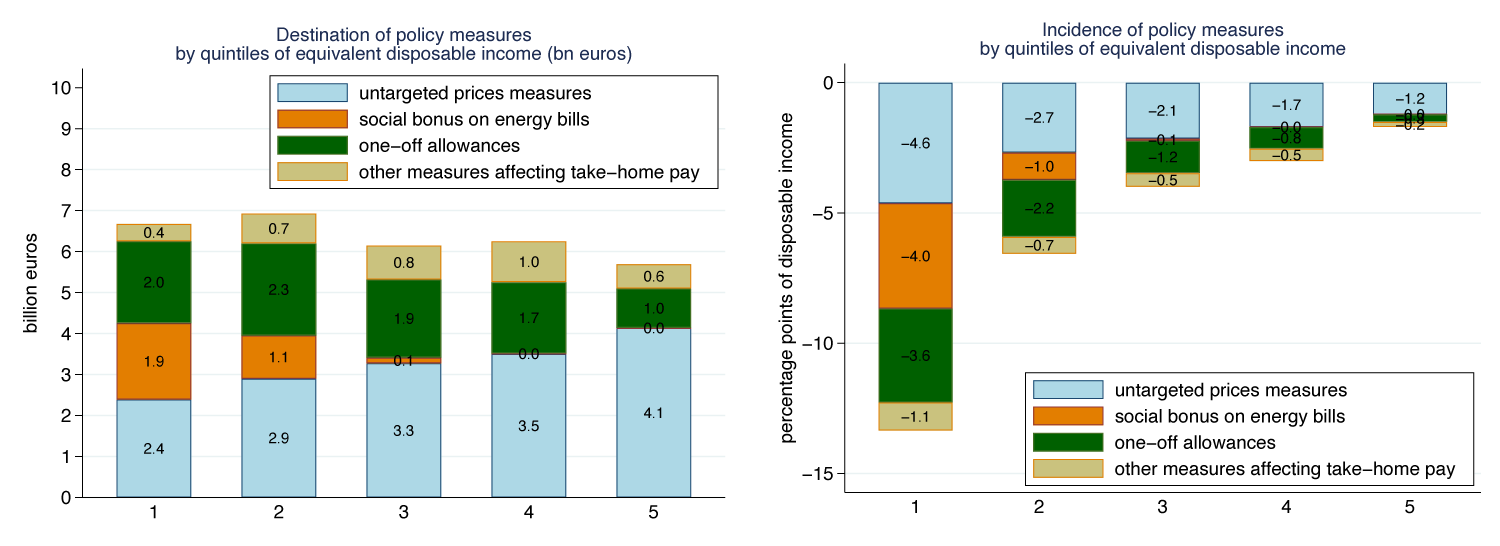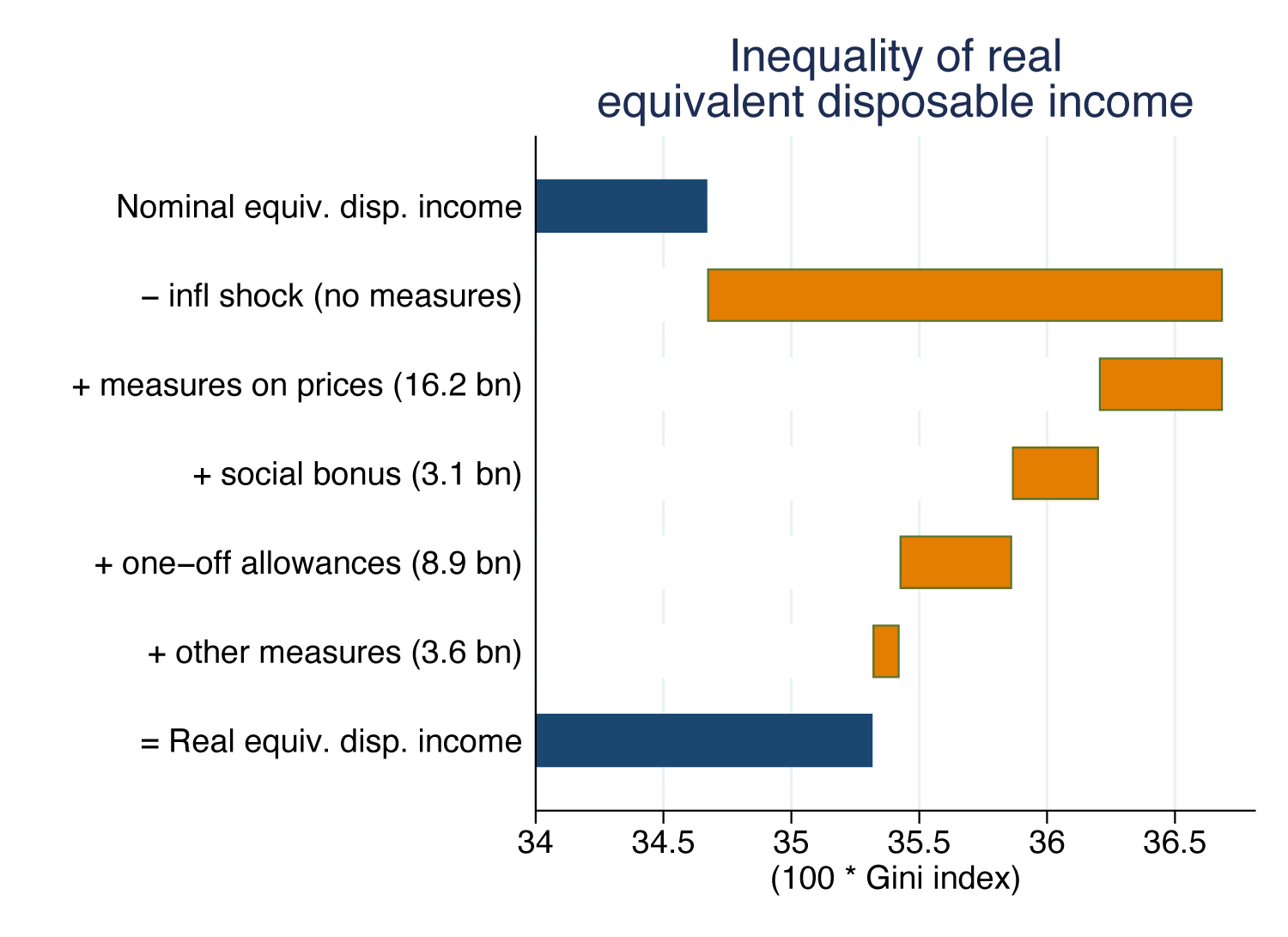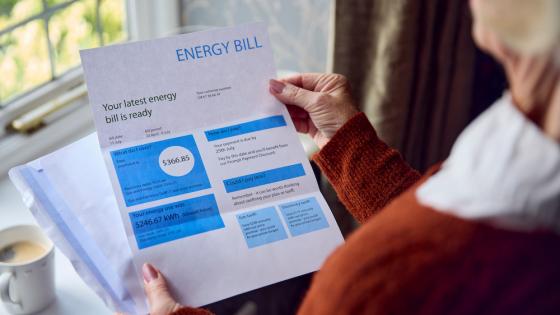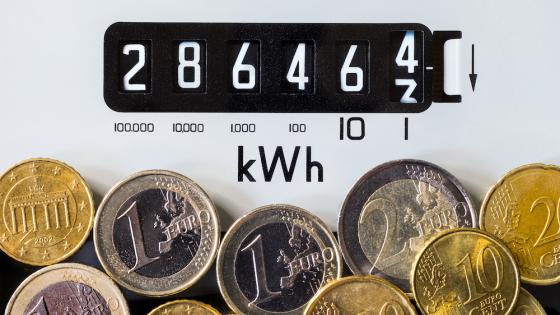Fiscal support measures to shield the economy from the impact of high energy prices should be temporary, targeted and tailored to preserving incentives to consume less energy
Christine Lagarde, introductory statement at the ECB press conference, 15 December 2022
In second half of 2021, inflation began to rise substantially all over the world, sustained by rising energy and food prices (Fornaro and Romei 2022, Uzeda et al. 2022). These higher costs have disproportionally hit poorer households, reducing their purchasing power and heightening the risks of social exclusion (Menyhert 2022). The heterogeneous impact of increasing prices on households has been mentioned and analysed by policymakers (Brainard 2022), institutions (Ari et al. 2022, European Commission 2022), think tanks (Claeys et al. 2022) and researchers (Charampalakis et al. 2022) alike. To different degrees, these contributions point to a significantly larger negative impact of current inflation on less-affluent households.
Governments were prompted to scale up interventions meant to shield families from price rises (see Plekhanov et al. 2022 for a discussion of measures taken in a number of emerging and developed economies, and Jain and Ilzetzki 2022 for the UK). There is, however, considerable disagreement among economists on the preferred policies (Vaitilingam 2022), also considering the variety of country-specific circumstances (in particular with respect to the structures and conditions of energy markets).
In Italy, inflation rose remarkably from mid-2021, passing the 12% mark by the end of 2022 – the highest value since the mid-19803. The government enacted a number of measures, some addressed to all consumers and others targeted to less well-off households and individuals. In a recent paper (Curci et al. 2022) we analyse the distributional effect on households’ purchasing power of both the unexpected rise in prices and the policy interventions.
We exploit BIMic, the tax and benefit microsimulation model of Banca d’Italia which matches survey data on income and wealth with survey data on consumption for Italian households (Curci and Savegnago 2019, Curci et al. 2020).
Inflation data for very detailed categories of goods and services allow us to reconstruct the expenditures in 2022 for each household (the ‘realised’ scenario), which already account for some government measures reflected into price dynamics.
Additionally, we define two counterfactual scenarios: one in which anti-inflation policies are muted but changes in prices caused by the shock are operational (i.e. the ‘no government intervention’ scenario); and one in which the inflationary shock is also excluded (i.e. the ‘pre-shock’ scenario based on the inflation expectations formulated in July 2021). The difference in 2022 expenditure levels between the no government intervention scenario and the pre-shock scenario quantifies the gross impact of the inflationary shock; the difference between the realised scenario and the pre-shock scenario assesses the impact of the inflationary shock net of anti-inflationary measures. Finally, the difference between the no government intervention scenario and the realised scenario proxies the effect of all the policy measures over the purchasing power distribution. Figure 1 shows the observed and the simulated inflation rates in the three scenarios.
Figure 1 Simulated inflation rates in alternative scenarios
Note: The realised scenario is based on observed price changes up to October 2022 and to internal Banca d’Italia forecasts for the price changes in November and December 2022.
Source: Our calculations based on data from Istat, Banca d’Italia and BIMic.
The impact of inflation
In 2021 and 2022 the Italian government intervened at several stages to cushion firms and households from rising energy prices. Policies affecting households can be grouped into three categories: untargeted price reductions, targeted price reductions, and measures affecting income. The first group includes the cuts in general system charges and in the VAT rate on gas bills, and the reduction of the excise duties on fuel. The second group basically coincides with the strengthening of the ‘social bonuses’ on energy bills, which do not benefit the generality of consumers but only the most disadvantaged. Therefore, although since April 2022 official estimates of the inflation rate account for the effect of the social bonus on energy prices, we separate it from the other measures affecting prices as this is a means-tested benefit. Finally, the third group includes the interventions that mitigated the impact of the energy crisis by increasing the take-home pay of individuals: two one-off allowances (€200 and €150 bonuses), the cut in social security contribution rates paid by employees and the advance in October and November 2022 of part of the pension indexation due in January 2023.
The remarkable differences existing between households’ consumption baskets and the high heterogeneity in price increases (between energy and food goods on the one hand, and other goods and services on the other) lead to very divergent perceived inflation rates across households. Figure 2 (left panel) shows a negative association between income and household-specific inflation rates. Aggregating them according to quintiles of equivalent income, we show that the distribution of household-specific inflation rates in the first quintile exhibits not only a higher average, but also a greater dispersion than the upper quintiles (Figure 2, right panel).
Figure 2 Household-specific inflation rates and equivalent disposable income
Source: Our calculations based on data from Istat, Banca d’Italia and BIMic.
The difference in price increases perceived by households is not the only channel through which the inflationary shock has a heterogeneous effect on their purchasing power. The average propensity to consume also plays a relevant role – the higher this propensity, the more a price rise absorbs a greater share of disposable income. Figure 3 (left panel) shows, in the scenario with no government intervention, how these two factors determine the impact of the inflationary shock on purchasing power by quintiles of equivalent income – the first quintile is by far the one most affected.
Figure 3 Incidence of the inflationary shock by quintiles of equivalent disposable income
Source: Our calculations based on data from Istat, Banca d’Italia and BIMic.
The counteracting effect of government measures
Overall, we find that government measures exerted a remarkable redistributive effect, offsetting a large part of the heterogeneity of the shock across income levels. This was achieved either by affecting downwards the price level of some goods (for all consumers or for a selected share of them) or by increasing the income of a significant number of earners.
Figure 3 (right panel) shows the incidence of the inflationary shock on disposable income gross and net of measures. For the first two quintiles, government interventions roughly halved the impact of the shock. Figure 4 (left panel) shows how public resources were allocated among households’ quintiles of equivalent income. The strengthening of social bonuses is the policy whose effects are mostly directed towards the less-affluent Italian households (Figure 4, right panel). Measures aimed at reducing the prices of energy goods for all consumers and those affecting take-home pay (disbursed on the basis on individual income only) benefited also mid- to high-income households.
Figure 4 Government measures (billions of euros and incidence on disposable income)
Source: Our calculations based on data from Istat, Banca d’Italia and BIMic.
Our analyses indicate that in absence of government interventions, the inflationary shock would have led to a significant increase in the Gini index of the distribution of real disposable incomes, from 34.7 to 36.7, confirming the regressive nature of the shock (Figure 5). The measures sterilised about 70% of this greater inequality. The strengthening of the social bonuses on energy bills proved to be the most efficient policy. Since eligibility is based on the means of the household (and not of the individual), this significantly reduced the Gini index while absorbing relatively few resources (costing € 3.1 billion). The measures affecting take-home pay (€ 12.5 billion) and, even more so, the non-selective interventions on the prices of energy goods (€ 16.2 billion) were much less efficient.
Figure 5 Pre- and post-shock inequality in purchasing power
Source: Our calculations based on data from Istat, Banca d’Italia and BIMic.
Authors’ note: The views expressed are personal and do not necessarily reflect the views of Banca d’Italia or the European Central Bank.
References
Ari, A, N Arregui, S Black et al. (2022), “Surging Energy Prices in Europe in the Aftermath of the War: How to Support the Vulnerable and Speed up the Transition Away from Fossil Fuels”, IMF Working Paper 22/152.
Brainard, L (2022), “Variation in the Inflation Experiences of Households”, Board of Governors of the Federal Reserve System, Spring 2022 Institute Research Conference Opportunity and Inclusive Growth Institute, Federal Reserve Bank of Minneapolis.
Cardoso, C, C Ferreira, J M Leiva, G Nuño, A Ortiz, T Rodrigo and S Vazquez (2022), “The Heterogeneous Impact of Inflation on Households’ Balance Sheet”, Red Nacional de Investigadores en Economía (RedNIE) Working Papers 176.
Charalampakis, E, B Fagandini, L Henkel and C Osbat (2022), “The impact of the recent rise in inflation on low-income households”, Box in ECB Economic Bulletin, Issue 7/2022, November.
Claeys, G, L Guetta-Jeanrenaud, C McCaffrey and L Welslau (2022) “Inflation inequality in the European Union and its drivers”, Bruegel Datasets, first published 26 October.
Curci, N, G Grasso, P Recchia and M. Savegnago (2020), “Anti-poverty measures in Italy: a microsimulation analysis”, Banca d’Italia Working Papers No. 1298.
Curci, N and M Savegnago (2019), “Shifting taxes from labour to consumption: the efficiency-equity trade-off”, Banca d’Italia Working Paper No. 1244.
Curci, N, M Savegnago, G Zevi and R Zizza (2022), “The redistributive effects of inflation: a microsimulation analysis for Italy”, Banca d’Italia Occasional Paper No. 738.
European Commission (2022), “The effect of rising energy and consumer prices on household finances, material deprivation and energy poverty in the EU”, Box in European Economic Forecast, Autumn 2022.
Fornaro, L and F Romei (2022), “Understanding the global rise in inflation”, VoxEU.org, 27 May.
Jain, S and E Ilzetzki (2022), “Assisting households facing rising energy costs”, VoxEU.org, 11 October.
Menyhert, B (2022) “The uneven effects of rising energy and consumer prices on poverty and social exclusion in the EU”, VoxEU.org, 13 December.
Plekhanov, A, J Sassoon and A Carruthers (2022), “Policy preferences and responses to high energy and food prices in emerging markets”, VoxEU.org, 25 November.
Uzeda, L, B Wong and Y Eo (2022), “Goods inflation is likely transitory, but upside risks to longer-term inflation remain”, VoxEU.org, 29 April.
Vaitilingam, R (2022), “Energy costs: Views of leading economists on windfall taxes and consumer price caps”, VoxEU.org, 19 September.
